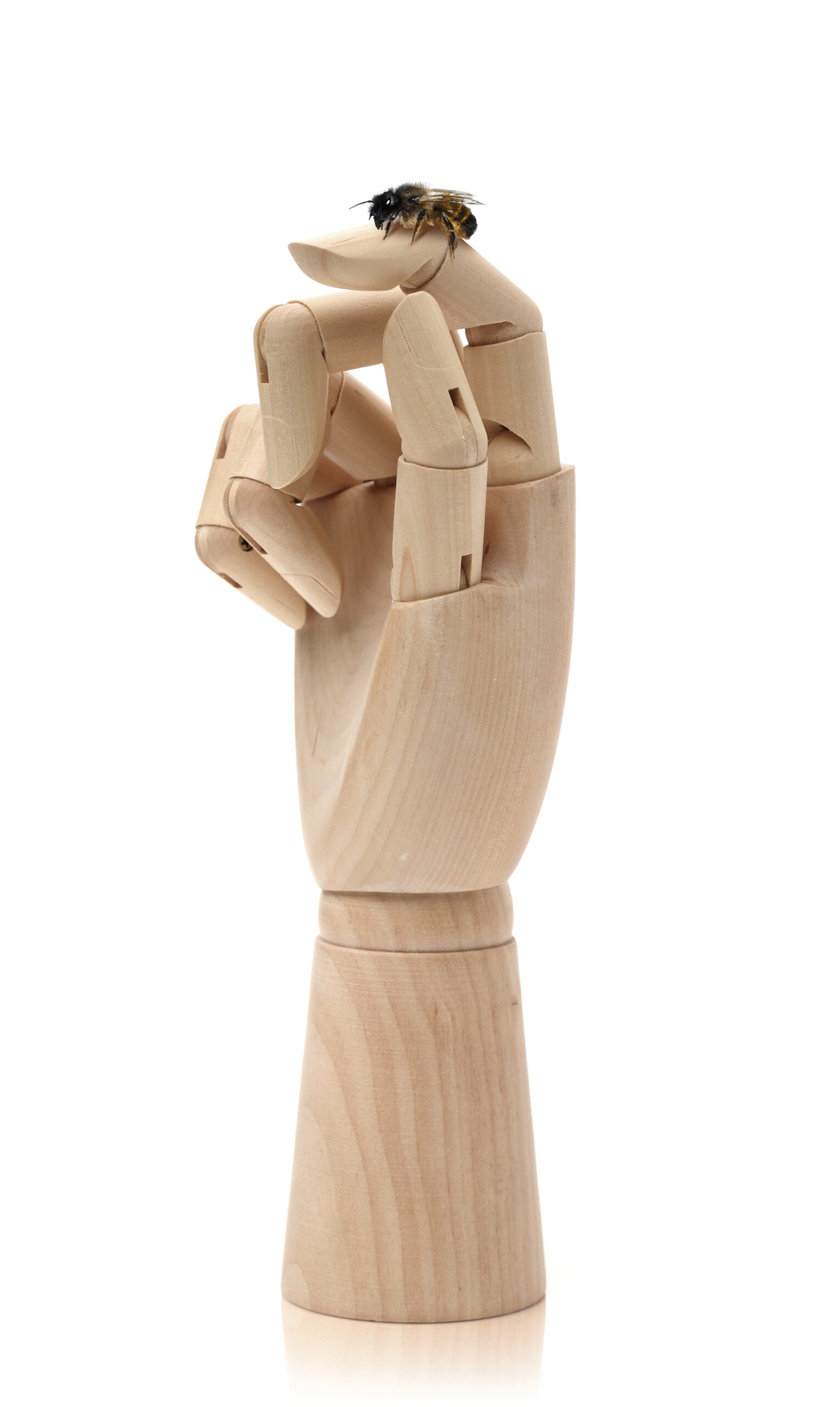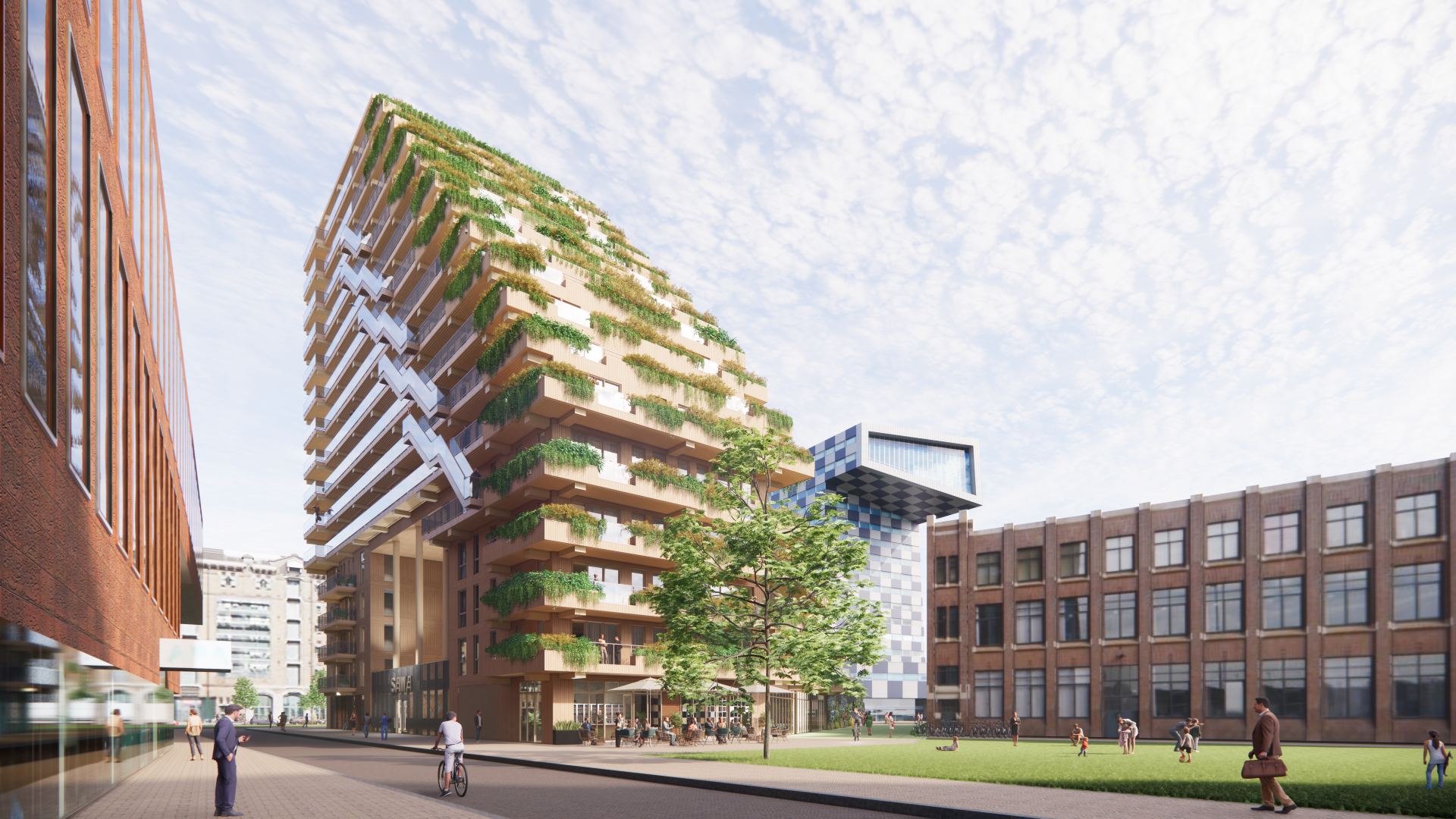Our answer is NICE
NICE Developers does not wait for change; it creates change.
Things must and can be better, is the loud and clear message of NICE Developers. The status quo in the construction and development world amazes them: the sector is standing still and takes no responsibility to really solve problems. Many parties talk "green," but show business as usual. Strengthened by their own knowledge and experience, Robert Winkel and Mark Compeer are therefore independently - with the support of progressive investor and development investor Focus on Impact - into battle.
Struggling they are, development architect Robert Winkel and developer Mark Compeer. For them, the realization of Paris Proof residential buildings is first and foremost a life mission. They see themselves not so much as "developers," but as world improvers. NICE Developers does not wait for change, but takes care of that change, by actively helping to build a better world. This is necessary, as they have seen in recent years. The current system of design, development and construction is well past its prime and downright rotten. Change comes too slowly, there are too many empty promises and mediocre ambitions. Mark: 'Building in wood would be too complicated and too expensive, so everyone chooses the easy way. The impact on the climate is ignored.' In addition, according to Mark and Robert, the sector contributes too little to an inclusive society, failing to realize a mix of owner-occupied, medium and social rent. Mark: 'This is precisely where we can provide more connection and dynamism, just as by better mixing working and living.' A new approach requires a radically different approach, cooperation and a redefinition of the norm. The duo is determined to make a significant contribution to this, by making their voices heard and with 'NICE evidence'. They show that things can be done differently!
NICE provides the answer to pressing questions from governments, corporations and property owners who want to do better.
NICE concept as a new standard
They discovered for themselves that it can be done differently. Robert recounts the "journey of discovery" of the past few years. If you want change, you have to embrace experimentation. We are not wait-and-see types and take risks in the full conviction that it will take us further no matter what.' Their mission? To introduce and spread the new NICE concept, focused on the well-being of people and nature. Each 'NICE Building' thereby has a positive impact on neighborhood, people and climate. That NICE puts its money where its mouth is is demonstrated by SAWA. This is the first high-rise residential building in the Netherlands with a wooden main load-bearing structure that is circular and detachable because no concrete was used on the floors. So the ecological footprint is small, but the impact for the neighborhood - with 109 homes and 12,500 m2 bvo - large. Robert: "SAWA is the healthiest building in the Netherlands. This first circular wooden high-rise project (50 meters) in Europe saves CO2 contributes to urban biodiversity, is accessible to different income groups with (middle) rental and owner-occupied housing, and facilitates the growth of a strong community.' Mark adds: 'SAWA shows that it is indeed possible to develop sustainably, with an eye for climate, biodiversity and people.' With this approach, NICE offers an answer to the pressing questions of governments, corporations and real estate owners who want to do things differently - better. These are parties who also want to reduce CO2-emissions and want to phase out concrete construction. The "NICE Buildings" belong to a new generation of buildings that serve the new generation of people.

Stop the bullshit: building better for people and climate can be done, because we are already doing it!
Robert: "People declared us crazy in the beginning. SAWA was an illusion. But we went all out, and with the help of everyone involved, SAWA is now a reality. That it can't be done is bullshit. We do not make empty promises: building better for people and climate is possible!' Yet this is not a finger pointing at all naysayers, but a helping hand: NICE wants to help others do better. Mark: "We want to share our knowledge and collaborate so that others can learn from it. Urgency wins out over the need for uniqueness. Temperatures are rising and budgets to do something about it are evaporating. An agreement was made in Paris: we must stay below 1.5 to 2 degrees of temperature increase. Attached to this objective is a maximum CO2-budget linked, including for the construction sector. This budget is decreasing in the coming decades. Today, by building homes, we are emitting more than the budget allows. If we continue like this, we will already exceed the CO2-budget to stay below the 1.5 degree temperature increase. The CO2-emissions must therefore be drastically reduced, and quickly. Robert: "Traditional concrete, brick and aluminum must go! By 2024 the biggest change really has to happen. Our biggest frustration is that many - governments, investors and developers - put this situation on the agenda without taking action themselves. There is too much talk and too little action.'
If traditional concrete construction shuts down soon, how will we realize the housing that is so needed?
Everything, according to the duo, is now about the question "Are you able to change with the times? Concrete construction is increasingly being questioned. The NICE developers foresee a lawsuit against the traditional concrete industry, due to excessive CO2-emissions in violation of the Paris Agreement. Such a scenario could bring concrete construction to a complete halt. And then? How then do we realize the housing that is so needed? Robert: "We have our eyes firmly fixed on the future. I hope that parties know where to find us so that we can prepare for what is to come.' With the right information, NICE wants to give governments and corporations more ammunition to get sustainable building higher on the agenda, to separate the sense from the nonsense and to actually start doing it. Robert: 'We think along and help others to come to the right product or the right tender. NICE is ready for it. Based on their own experiences and connections in the wood construction chain, they can act quickly. 'Within the given CO2-budget, we can also realize many more NICE buildings, simply because in the traditional way, you are more likely to go through your CO2-budget.
More homesand a better climate
The answer is NICE
Small footprint, big impact
Robert and Mark have rock-solid confidence in their mission and vision and feel empowered by their experience over the past few years. They are especially proud of the great strides they are making in the application of bio-based and recycled materials. Robert: "As much as 75% of SAWA's main load-bearing structure consists of these. Many of those materials were not yet certified in this composition, which is why everyone considered it unfeasible. In close cooperation with our co-developer and builder ERA Contour, we succeeded.' SAWA is built mostly in cross laminated timber (CLT). The building has a small CO2-footprint due to the fact that the CO2 and is fully circular. The wood can be reused because the floors are not concrete but recycled roof gravel: dry ballast that is easily separable from the wood. This allows the materials to have a second life later. Moreover, their construction time is shorter than concrete construction. Another big advantage of their experience with SAWA, is the trust they have from the wood suppliers. Mark: "These parties choose their projects and partners. If you haven't completed a building in wood before, you pose a greater risk to them.'
Without trying, there will be no change at all!
Now Robert and Mark want to dispel the myth of SAWA, precisely by sharing about it. Mark: "There are stories going around that are not true. For example, we supposedly got the land for free, which is not true. Apparently many people still don't believe that this is really possible.' While SAWA 'just' complies with the Building Code and has managed to use certified, recycled materials, Robert says. 'Of course there are things we would do differently now. Making smarter use of water, for example. Now the roof greenery is irrigated with tap water, next time we want to do that with rainwater, by providing better water storage. We also want to look into better waste management. And although much of our volume consists of recycled materials, we want to use even more biobased and recycled materials in future NICE Buildings. For example, by replacing drywall with hemp or flax. There is still plenty that can be improved in the next generation of buildings, but without trying first, there will be no change at all!

No empty promises, but proven business case
With the development of SAWA, NICE invested - in collaboration - in innovation and research that led to a new concept. That concept is a sum of gained knowledge, skills, experiences and points for improvement, which others can now benefit from. Robert: "If we want things to be different, we need a different way of life. Wood building is not enough. It is about biodiversity, less loneliness and making sure there is a mix between owner-occupied, mid-rent and social rented housing. We want to make accessible and sustainable housing. For example, 50 of the 109 homes in SAWA are mid-rent homes. We are also working in cooperation with housing corporations on social housing according to the NICE Concept. So these are healthy homes: wood, biodiverse and with shared spaces. Timber construction is just one component. More than building and developing, it's about getting a different perspective on life.' NICE welcomes the new law in force in France as of 2022 - requiring half the mass of government buildings to be biobased. Mark: 'That's an example! Because it is not at all a question of being able to, but of wanting and doing!'
The profit of this business case shows itself not only in money, but in generations
NICE developers raise the need, but also the feasibility and good business case of this concept. Mark: "Yes, it is a difficult road and yes, we will settle for less profit. We put quality and sustainability first. As an independent player, we are not 'hostage to money' like so many others. People we work with find us because of content, energy, openness and ambition. We don't make promises we can't keep and separate sense from nonsense. We look for like-minded people in this. It's an adventure. It's pioneering. It means sacrificing something on profit, but making real impact.' In doing so, NICE also steers on social values. NICE Buildings benefit not only the owners and residents, but the entire neighborhood and city. A longer shelf life of the earth, that is the ultimate profit Robert and Mark are fighting for. A profit that pays off not only in money, but in generations.

